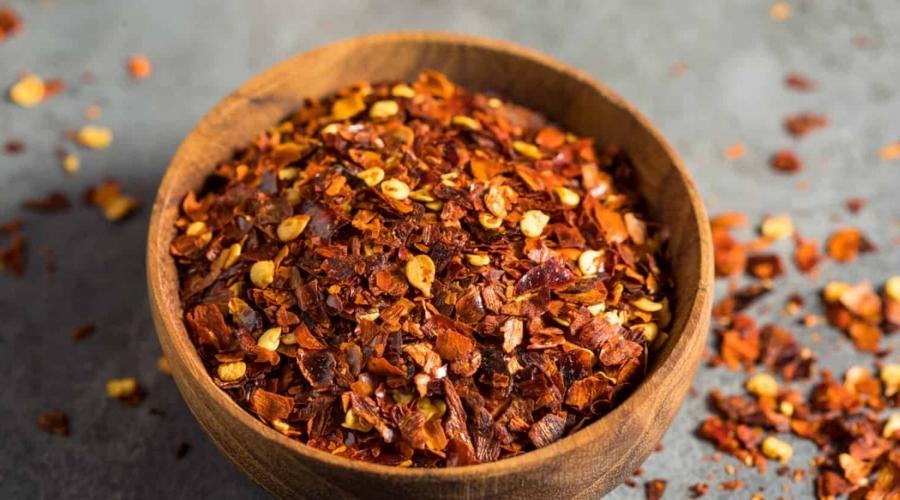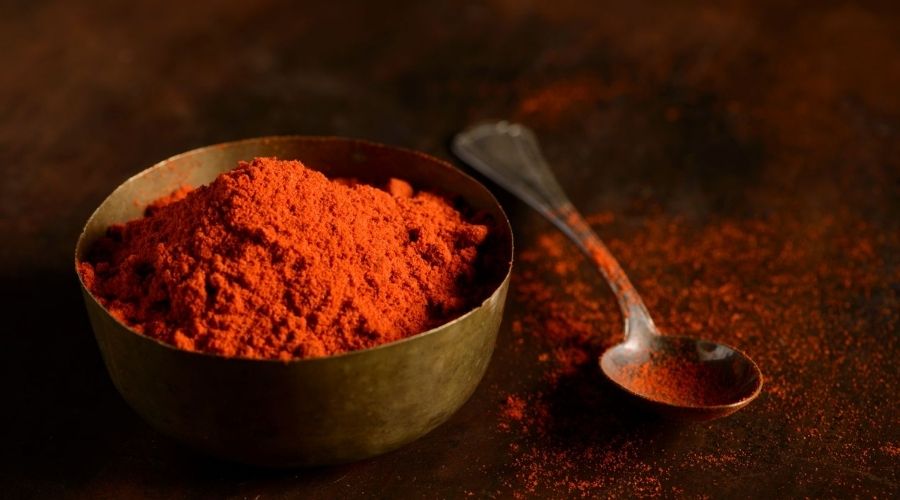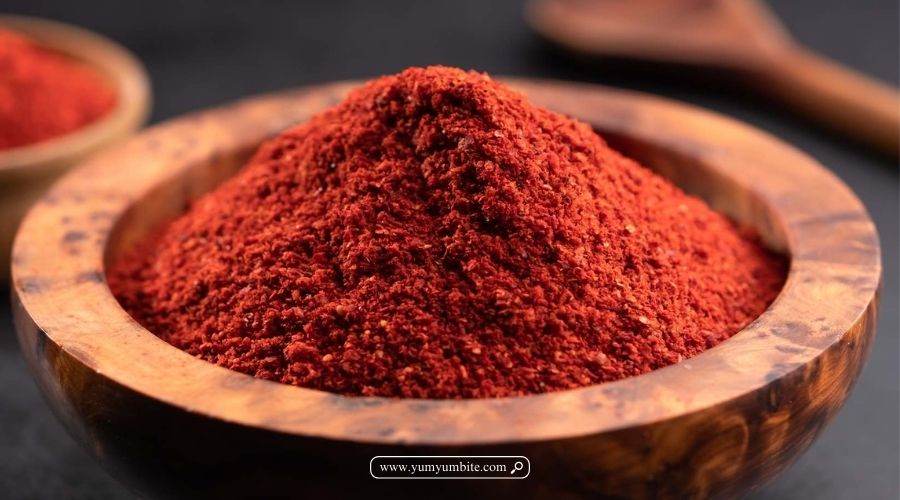Cayenne pepper sauce is a staple in many kitchens, adding a fiery kick to everything from soups to marinades.
However, there are times when you might need a substitute—whether you’ve run out, are catering to milder taste buds, or simply want to try something different.
Thankfully, there are plenty of alternatives that can replicate the heat and flavor of cayenne pepper sauce without compromising on taste.
In this article, we’ll explore over 15 cayenne pepper sauce substitutes that you can use to spice up your dishes.
From milder options to those that pack an even bigger punch, these substitutes will ensure your meals are anything but bland.
15+ Best Cayenne Pepper Sauce Substitutes to Spice Up Your Meals
Whether you’re looking to dial down the heat or experiment with new flavors, these cayenne pepper sauce substitutes offer versatile options for every palate.
With choices ranging from smoky chipotle powder to tangy Sriracha, you can easily tailor the spice level to suit your needs.
Next time you find yourself without cayenne pepper sauce, or simply want to switch things up, turn to one of these alternatives to keep your dishes flavorful and exciting.
Don’t be afraid to mix and match these substitutes to create your own unique twist on traditional recipes.
Paprika with a Dash of Hot Sauce
Paprika is a milder alternative to cayenne pepper, providing a similar red hue without the intense heat.
By adding a small amount of hot sauce to paprika, you can mimic the spiciness of cayenne, making it a suitable substitute for those who prefer a bit of heat without overwhelming the dish.
However, be cautious when adding the hot sauce, as too much can make the mixture spicier than intended. This substitute works well in recipes like chili, soups, and stews where a hint of spice is desired without overpowering the other flavors.
Red Pepper Flakes

Red pepper flakes are a common household spice that can replace cayenne pepper.
They offer a similar heat level and a slightly different texture, with the crushed flakes adding a bit of crunch. This substitute is ideal for dishes like pasta, pizza, and marinades, where a touch of heat and texture enhances the dish.
Caution is advised when using red pepper flakes, as they can quickly make a dish overly spicy if not measured properly. Start with a small amount and adjust to taste.
Hot Paprika
Hot paprika is a variety of paprika that is spicier than the regular version but still milder than cayenne pepper.
It brings both heat and a smoky flavor, making it a versatile substitute in recipes that require a deep, rich flavor profile.
Use hot paprika in dishes like goulash, BBQ rubs, and roasted vegetables for a balanced heat with a smoky undertone.
Be cautious, though, as hot paprika can vary in heat levels depending on the brand, so it’s best to add it gradually and taste as you go.
Also Read: 12+ Black Garlic Sauce Substitutes for Flavorful Cooking!
Chipotle Powder
Chipotle powder, made from smoked and dried jalapeño peppers, is an excellent substitute for cayenne pepper when you want to add both heat and a smoky depth to your dishes.
It has a slightly lower heat level than cayenne, but its rich, smoky flavor can enhance a wide variety of recipes.
Chipotle powder works particularly well in Mexican dishes, BBQ sauces, and marinades where a smoky, spicy kick is desired.
Be cautious when using chipotle powder, as its smoky flavor can dominate the dish if too much is added, so start with a smaller amount and adjust to taste.
Chili Powder

Chili powder is a blend of spices that usually includes ground chili peppers, cumin, garlic powder, and oregano.
While it’s milder than cayenne pepper, it can still bring a pleasant heat and complex flavor to your dishes. This makes chili powder a great substitute in recipes like tacos, chili con carne, and enchiladas, where a milder, more rounded heat is acceptable.
However, since chili powder is a blend, be cautious about using it in dishes where you want a pure pepper flavor, as the additional spices might alter the intended taste.
Gochugaru
Gochugaru, a Korean red chili pepper powder, is another flavorful substitute for cayenne pepper. It has a moderate heat level and a slightly sweet, fruity flavor, which can add a unique twist to your dishes.
Gochugaru is particularly suitable for Asian-inspired recipes, including kimchi, stir-fries, and soups, where its distinct flavor profile can shine.
Use caution with gochugaru, as its heat level can vary depending on the brand and the specific type of chili used, so it’s wise to add it gradually and taste as you go.
Crushed Red Pepper
Crushed red pepper, also known as red pepper flakes, is a versatile substitute for cayenne pepper. It provides a similar level of heat and can add a bit of texture to dishes with its coarse, flake-like consistency.
This substitute is especially useful in recipes like pasta sauces, pizza toppings, and salads, where a little bit of spice can elevate the flavor.
However, be cautious when using crushed red pepper, as it can be uneven in heat distribution—some bites may be much spicier than others.
Start with a small amount and adjust according to your heat tolerance.
Also Read: 12+ Perfect Guajillo Sauce Substitutes for Every Recipe!
Serrano Peppers
Serrano peppers are a fresh alternative to cayenne pepper, offering a similar heat level but with a bright, crisp flavor.
When minced or finely chopped, they can be used in place of cayenne in recipes that benefit from a fresh, spicy kick, such as salsas, guacamole, or stir-fries.
Serrano peppers are particularly suitable for dishes that call for a raw or lightly cooked chili element.
Be cautious with serrano peppers, as they can vary in heat, sometimes being hotter than cayenne. Start with a small amount and taste as you go.
Cayenne Pepper Paste
Cayenne pepper paste is a concentrated form of cayenne that can be used as a direct substitute.
It offers the same heat and flavor intensity as powdered cayenne but in a paste form, which can be more easily incorporated into liquid-based dishes like soups, sauces, and marinades.
This substitute is particularly useful in recipes where a smooth, consistent texture is important.
However, be cautious when using cayenne pepper paste, as it can be more potent than the powdered form—use it sparingly and adjust to taste to avoid overwhelming your dish.
Also Read: 15+ Best Non-Dairy Milk Substitute to Satisfy Every Taste and Dietary Need!
Tabasco Sauce
Tabasco sauce is a liquid hot sauce made from aged red peppers, vinegar, and salt, and it serves as a handy substitute for cayenne pepper.
While Tabasco is less concentrated and more tangy due to the vinegar, it still delivers a sharp, spicy kick that can enhance many dishes.
This substitute works particularly well in recipes like Bloody Marys, soups, and marinades where a splash of heat and acidity is desirable.
However, be cautious when substituting Tabasco for cayenne pepper in dry rubs or baking, as the liquid content may alter the recipe’s texture.
Habanero Powder

Habanero powder is a much spicier alternative to cayenne pepper, offering an intense heat level along with fruity undertones.
It’s ideal for those who enjoy their dishes extra spicy. This substitute is best suited for recipes like hot sauces, spicy stews, or chili, where the dish can handle the extra heat and benefit from the unique flavor profile of habanero.
Caution is essential with habanero powder—it’s significantly hotter than cayenne, so start with a very small amount and increase only if needed.
Aleppo Pepper
Aleppo pepper is a Middle Eastern chili powder known for its moderate heat and fruity, slightly salty flavor. It’s a great substitute for cayenne pepper when you want to add a more complex, less fiery heat to your dishes. Aleppo pepper works beautifully in Mediterranean and Middle Eastern recipes, such as roasted vegetables, lamb dishes, and dips like hummus.
Be cautious with Aleppo pepper as it has a more subtle heat compared to cayenne, so you may need to use a bit more to achieve the desired spiciness.
Sriracha Sauce
Sriracha sauce is a popular hot chili sauce made from chili peppers, vinegar, garlic, sugar, and salt. It serves as an excellent substitute for cayenne pepper when you need both heat and a touch of sweetness.
The sauce is less intense than cayenne, offering a more balanced, garlicky flavor that complements a wide range of dishes.
Sriracha is particularly well-suited for Asian-inspired recipes, such as stir-fries, noodle dishes, and dipping sauces.
However, be cautious when using Sriracha in place of cayenne in recipes where sugar might alter the flavor profile, such as in savory rubs or dry mixes.
Thai Chili Peppers
Thai chili peppers, also known as bird’s eye chilies, are a potent substitute for cayenne pepper.
These small, fiery peppers pack a similar heat level and a fresh, sharp flavor, making them ideal for recipes where fresh chili heat is desired.
Thai chili peppers are particularly effective in Thai and other Southeast Asian dishes, like curries, soups, and spicy salads.
When using Thai chili peppers, be cautious as they can be even hotter than cayenne, especially when used in large quantities. It’s advisable to start with a small amount, finely chopped, and increase as needed.
Cayenne Pepper Oil
Cayenne pepper oil is a concentrated, infused oil made by steeping cayenne peppers in oil, which captures the heat and flavor of the pepper in liquid form.
This substitute is especially useful in recipes where you want to add a spicy kick without altering the texture, such as in dressings, marinades, or drizzling over finished dishes like pasta or pizza.
Be cautious with cayenne pepper oil, as it can be very potent—just a few drops are usually enough to achieve the desired heat.
Homemade Cayenne Pepper Sauce Substitute
Running out of cayenne pepper sauce can be a hassle, especially when you’re in the middle of cooking and need that extra kick of heat.
Luckily, you can easily make a homemade cayenne pepper sauce substitute with ingredients you likely already have in your kitchen.
This recipe combines the heat of red pepper flakes with the tanginess of vinegar and the depth of garlic, creating a flavorful and versatile sauce that mimics the intensity of cayenne pepper sauce.
Perfect for drizzling on your favorite dishes, adding to marinades, or spicing up soups and stews, this substitute is a quick and convenient solution when you need to bring the heat.
Ingredients
- 1 tablespoon red pepper flakes
- 1/4 cup white vinegar
- 2 tablespoons tomato paste
- 2 garlic cloves, minced
- 1/4 teaspoon sugar
- 1/4 teaspoon salt
- 1/4 teaspoon smoked paprika (optional for a smoky flavor)
- 1/4 cup water
Instructions
- Prepare the Ingredients: Start by gathering all your ingredients. If you prefer a smoother sauce, you can grind the red pepper flakes in a spice grinder or use a mortar and pestle to create a finer texture.
- Simmer the Sauce: In a small saucepan, combine the red pepper flakes, vinegar, tomato paste, minced garlic, sugar, salt, and smoked paprika. Add the water and stir well to combine.
- Cook the Sauce: Place the saucepan over medium heat and bring the mixture to a simmer. Reduce the heat to low and let it simmer for 5-7 minutes, stirring occasionally. This will allow the flavors to meld together and the sauce to thicken slightly.
- Cool and Blend: Remove the saucepan from the heat and let the mixture cool for a few minutes. For a smoother consistency, transfer the sauce to a blender or use an immersion blender to puree it until smooth. If you prefer a chunkier sauce, you can skip this step.
- Store the Sauce: Pour the sauce into a clean glass jar or bottle with a tight-fitting lid. The sauce can be stored in the refrigerator for up to two weeks. Shake well before each use.
This homemade cayenne pepper sauce substitute is a lifesaver when you need that fiery kick but don’t have any cayenne pepper sauce on hand.
The combination of red pepper flakes and vinegar, with a touch of garlic and tomato paste, creates a rich and spicy sauce that’s both versatile and flavorful.
Whether you’re using it as a condiment, adding it to marinades, or incorporating it into recipes, this sauce is a fantastic alternative that will enhance the taste of your dishes.
Plus, it’s easy to adjust the heat level and flavor profile to suit your preferences, making it a customizable solution for all your spicy cooking needs.
1. What can I use if I don’t have cayenne pepper sauce?
If you don’t have cayenne pepper sauce, you can use several substitutes depending on what you have available.
Options include hot sauces like Sriracha or Tabasco, red pepper flakes, or even a homemade blend of paprika and hot sauce.
Each alternative will offer a slightly different flavor and heat level, so choose based on your taste preferences and the requirements of your recipe.
2. Can I use paprika as a substitute for cayenne pepper sauce?
Paprika can be used as a substitute for cayenne pepper sauce, but it’s milder and lacks the same level of heat.
To achieve a similar spicy kick, you can mix paprika with a dash of hot sauce or a pinch of red pepper flakes.
This combination will give you both the color and some of the heat you’re missing from cayenne pepper sauce.
3. How do I adjust the heat level of a cayenne pepper sauce substitute?
To adjust the heat level of a cayenne pepper sauce substitute, start by using a small amount of the substitute and taste as you go.
For example, if using red pepper flakes or hot sauce, you can add more gradually until you reach the desired heat.
If you find the substitute is too hot, you can dilute it with additional ingredients like vinegar, water, or tomato paste to balance out the spice.
4. Is there a non-spicy substitute for cayenne pepper sauce?
Yes, if you’re looking for a non-spicy alternative to cayenne pepper sauce, consider using a mix of mild spices such as paprika and a bit of cumin or garlic powder. These spices will add depth and flavor without the heat.
For a tangy element without spice, you can also use lemon juice or vinegar in your recipe.
5. Can I use fresh chilies as a substitute for cayenne pepper sauce?
Fresh chilies, such as serrano or jalapeño, can be used as a substitute for cayenne pepper sauce.
Simply chop them finely and use them in your recipe. Keep in mind that fresh chilies will provide a different texture and flavor compared to cayenne pepper sauce, and their heat level can vary.
Adjust the quantity based on your desired spice level and the type of chili you are using.
Sources
- https://www.instacart.com/company/ideas/cayenne-pepper-substitute/
- https://www.quora.com/What-is-the-best-substitute-for-cayenne-when-you-run-out-Is-harissa-as-good-Are-crushed-red-pepper-flakes-okay-too
- https://peppergeek.com/cayenne-pepper-substitute/
- https://www.chilipeppermadness.com/cooking-with-chili-peppers/cayenne-pepper-substitute/
- https://www.allrecipes.com/cayenne-pepper-substitute-7974702
- https://www.chilipeppermadness.com/recipes/cayenne-pepper-sauce/


